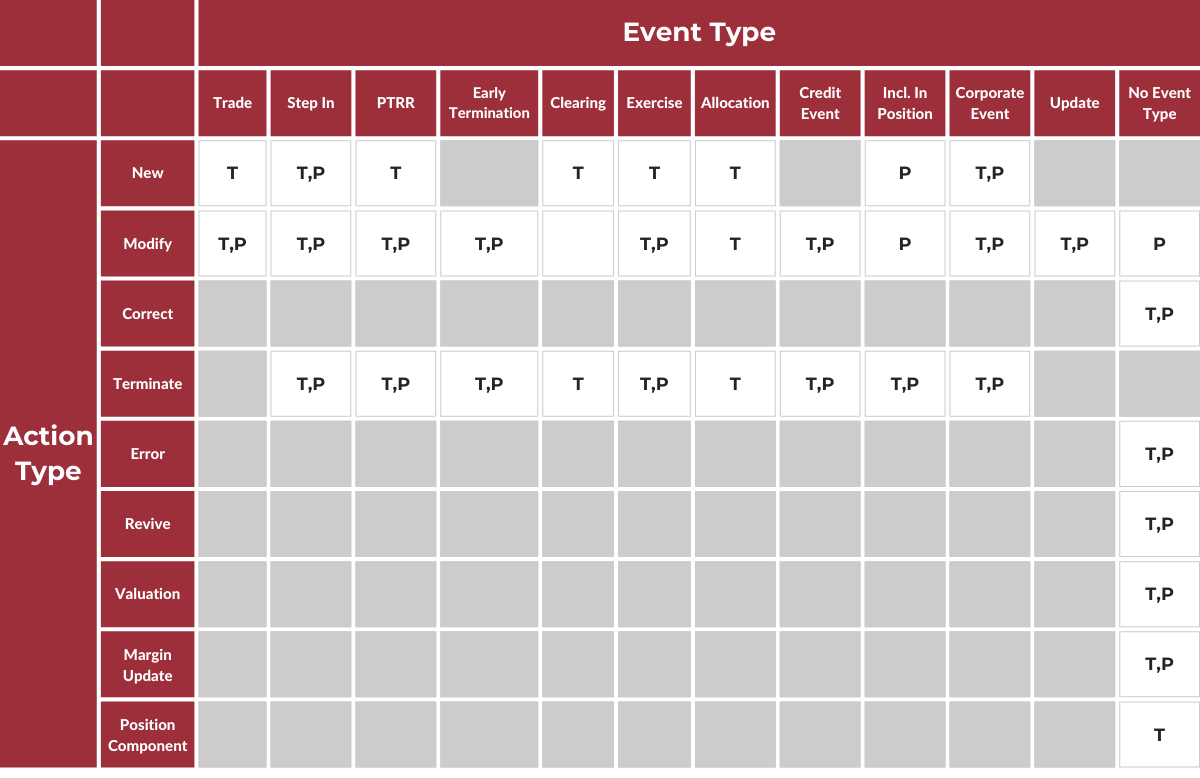EMIR Refit - What you need to know and what you need to do
The EMIR Refit - a significant update to the European Market Infrastructure Regulation (EMIR) - has been in effect across the EU for several months now. With the UK fast approaching its own go-live date, 30th September 2024, it’s the perfect time to recap the key aspects of the key points of EMIR Refit and what you need to do.
Background - EMIR and EMIR Refit
EMIR is an EU regulation aimed at increasing the transparency and stability in over-the-counter (OTC) derivatives markets. Companies with trading activities in the European Economic Area, and those in the UK from September 2024, are obligated to comply in a few key areas:
- Reporting: Market participants must report details of their OTC derivative contracts to trade repositories.
- Central Clearing: Certain OTC derivative contracts must be cleared through a central counterparty to reduce counterparty risk.
- Risk Management: Market participants are required to implement robust risk management processes, such as collateral management, to reduce systemic risk.
EMIR Refit
Over time, EMIR’s regulations have become outdated and complex, and mass reporting errors emerged, leading to the launch of the EMIR Refit (Regulatory Fitness and Performance Program) in 2017. The program intends to improve the quality of reporting by simplifying the regulation, including alignment with international standards. An initial round of amendments in 2019 expanded the definition of Financial Counterparties to include more entities posing risk to the financial system, and introduced the concept of Small Financial Counterparties which are exempt from clearing obligations, among many other changes.
ESMA’s Final Report, laying out the program’s next steps, was published in December 2020, endorsed by the European Commission in June 2022 and published into the European Commission Official Journal in October 2022 for implementation in April 2024. This latest publication includes substantial updates to the technical standards associated with EMIR, covering both the regulatory obligations (Regulatory Technical Standards) and the standards, formats, frequency and methods of fulfilling these obligations (Implementing Technical Standards). Following Brexit, the FCA have ‘onshored’ the EU regulation, EMIR Refit will be a requirement in the UK in September 2024.
What you need to know
EMIR Refit: The latest changes
At a high level, there are three areas of change that you should know about:
Reportable fields: With the inclusion of 89 new reporting fields and the elimination of 15 previous fields, the total number of reporting fields under EMIR has increased from 129 to 203. For context, this is more than double the number of reportable fields under MIFIR for trade and transaction reporting. Whilst the removal of ‘Beneficiary’ and ‘Trading Capacity’ go some way to simplification, reporting firms’ overall requirements have been made more complex with the addition of challenging fields such as those pertaining to their counterparties, including clearing thresholds, reporting obligations and corporate sectors.
Reporting lifecycle: EMIR Refit aims to make the lifecycle of a trade more transparent with increased granularity on what action has been taken, including the reporting of modifications or terminations of a contract, as well as a new field, ‘Event Type’, which helps to explain why an action was taken. ‘Event Type’ is to be reported and used in conjunction with ‘Action Type’ - ESMA has provided the matrix below to illustrate when reporting is required and at what level (Transactional, ‘T’, or Positional, ‘P’)
Harmonisation: As part of simplifying EMIR, ESMA has sought to align the regulation with international standards with which firms are already familiar. For example, EMIR Refit aligns closely to the work done by the CPMI-IOSCO Harmonisation Group on critical data elements, directly impacting the generation of Unique Transaction Identifiers. Harmonisation also applies to the formatting of data reports. The fully standardised ISO20022 XML format is widely used elsewhere, and isthe required format of EMIR reporting as of April 2024 in the EU, and in September 2024 in the UK.
Regulatory rewrites - EMIR is not alone
Research published In 2021 highlighted that 97% of firms were misreporting under EMIR. With that backdrop, EMIR’s rewrite is no surprise. Similarly, high profile reporting failures and enforcement actions have occurred in the US, and the CFTC implemented an initial round of changes to its swaps reporting rules in December 2022, ahead of plans to implement its second phase in Q4 2023. The Monetary Authority of Singapore also expanded their OTC derivatives trade reporting requirements in 2021, and the Canadian Securities Administrators plan to implement changes to their trade reporting rules will come into force in 2025. This is to name just a few. Given this wider context, EMIR Refit can be viewed as one of a long list of regulatory rewrites in the trade and transaction reporting space. And since EMIR Refit is not alone, the actions taken in response to these amendments can go a long way in determining a firm’s preparation for the trials to come.
What you need to do
Data
As a regulation which leans heavily on reporting obligations, EMIR has always represented a data problem for firms. The amendments made through EMIR Refit compound these challenges, with a significant increase in reportable fields and a new required format. For many of the large firms that fall into EMIR’s scope, managing masses of global data will already present an operational challenge, especially if those firms are also operating on legacy systems. Big data consulting and technology industries are experiencing significant growth as firms respond to competitive and regulatory pressures to modernise - of which EMIR Refit is one of the latest. Firms that take the opportunity to clean up their data stores and optimise their data pipelines in preparation for EMIR Refit will find themselves better prepared to respond to the challenges ahead, regulatory or otherwise.
Technology and expertise
In the same way, firms that view EMIR Refit as a driving force for technology transformation will be better placed for more seamless transitions during future shifts in economic and regulatory conditions. In particular, the use of dynamic and broad solutions, such as platforms, can provide a breadth of operational coverage which means that many of the necessary changes can be made all within one system. Managing these changes with speed and precision requires that the technology partner is equipped with deep subject matter expertise - a commodity that is especially important in the context of a rewrite that comes 10 years after original EMIR implementation. In that time, many firms will likely have lost their internal experts. Trusting an external partner is not always easy, as trust is built not only through expertise and accolades, but also through communication and customer service excellence. This point can easily be missed when the primary focus is technological change, but is a crucial consideration when firms are relying on external partners to address regulatory obligations.
So, to avoid dreading the next regulatory rewrite, choose a technology partner with the capabilities to understand and operationalise your end to end obligations, and who you can trust to guide you through the process with maximum clarity. Most importantly, choose a technology partner with a track record of customer service excellence alongside technical expertise. This combination is the most impactful for successful change.
eflow’s TZTR Transaction Reporting platform is purpose-built to meet all EMIR and MiFIR reporting obligations and is already being used by European firms to comply with the new legislation that was rolled out in April 2024.
Key Changes
1. Expansion of Reportable Fields
- The number of reportable fields has increased from 129 to 203 in the EU and to 204 in the UK.
- This expansion aims to enhance the granularity and accuracy of derivatives reporting.
2. Introduction of the ‘Corporate Sector’ Field
A new data field, ‘corporate sector,’ has been introduced to classify counterparties based on their primary business activities.
This addition helps regulators better understand the nature of the entities involved in derivative transactions.
3. Adoption of ISO 20022 XML Reporting FormatBoth EU and UK EMIR Refit mandates the use of the ISO 20022 XML format for reporting, replacing previous formats to standardize data submission.
This change facilitates improved data quality and interoperability across reporting entities.
4. New Reporting Timelines
EU EMIR Refit went live on 29 April 2024, with a backloading deadline for outstanding derivatives set for 26 October 2024.
UK EMIR Refit is scheduled to commence on 30 September 2024, with a backloading deadline of 31 March 2025.
EMIR Refit Implementation TimelineDate Milestone 29 April 2024 EU EMIR Refit go-live 26 October 2024 EU backloading deadline for outstanding trades 30 September 2024 UK EMIR Refit go-live 31 March 2025 UK backloading deadline for outstanding trades Additional Resources
For more detailed information on EMIR Refit and its implications, consider exploring the following resources:
- Kaizen Reporting: 5 Key Changes for EMIR Refit 2024
- TRAction Fintech: What is the new ‘Corporate sector’ field under EMIR Refit?
- Deloitte UK: EMIR Refit – Key changes and challenges
To help you prepare effectively, we are offering a free EMIR Refit Readiness Audit. This complimentary 30-minute consultation will assess your current readiness and provide insights on how to maintain your compliance during the transition. Book your free EMIR Refit audit here.




